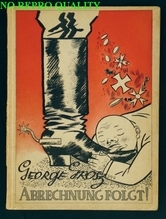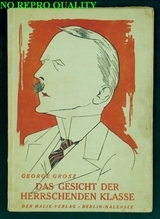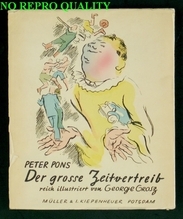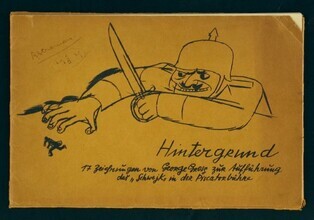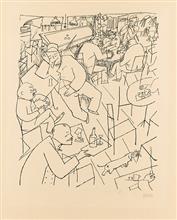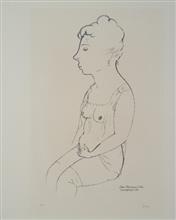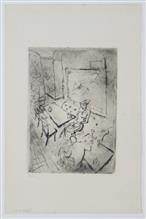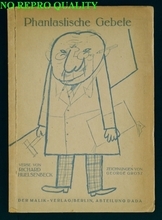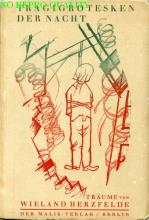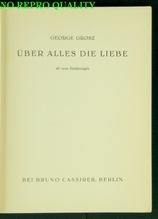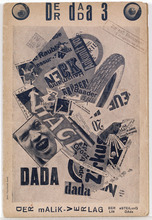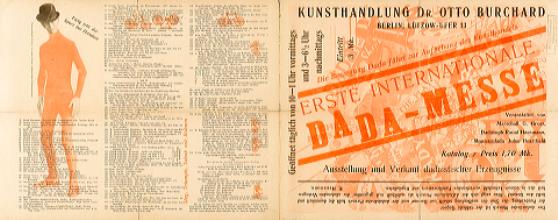Der Agitator
George Grosz
Surrounded by onlookers, an agitator rouses the crowd to action, brandishing a loudhailer in one hand and a noisemaker in the other. His clothing is decorated with medals and a swastika. The black-white-red bands of the heart and the banner are the colors of the flag of the former German Reich. The agitator is also equipped with a rubber truncheon and saber. In the topmost part of the work, George Grosz has translated the agitator’s words into images: the soldier’s boot with crown of laurels promises military triumphs; the roast chicken, alcohol and bare female buttocks represent a life of luxury. The lower half of the painting contains the spectators, all men, eagerly surging towards the rabble rouser, hungry to hear more. Each member of the rabble is a caricature: on the left the affluent upper classes and on the right the oppressed working man. George Grosz anglicized his name during the First World War to provoke his nationalist, militarist fatherland. Grosz considered himself a modern history painter, holding up a mirror to society. In the 1920s, he witnessed the gradual rise of National Socialism. Shortly before Hitler seized power in 1933, Grosz emigrated to America, a land that he had long admired.
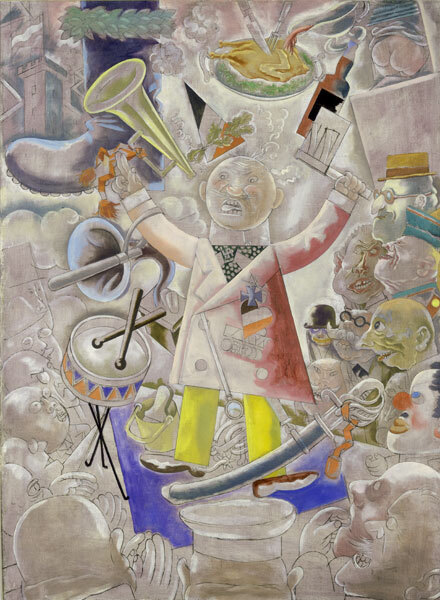
Makers
Translated title
The Rabble Rouser
Collection
Production date
1928
Library
Click here to view 23 related documents
Dimensions
112.5 x 84.5 x 3cm.
Material
oil on canvas
Object number
A 59

